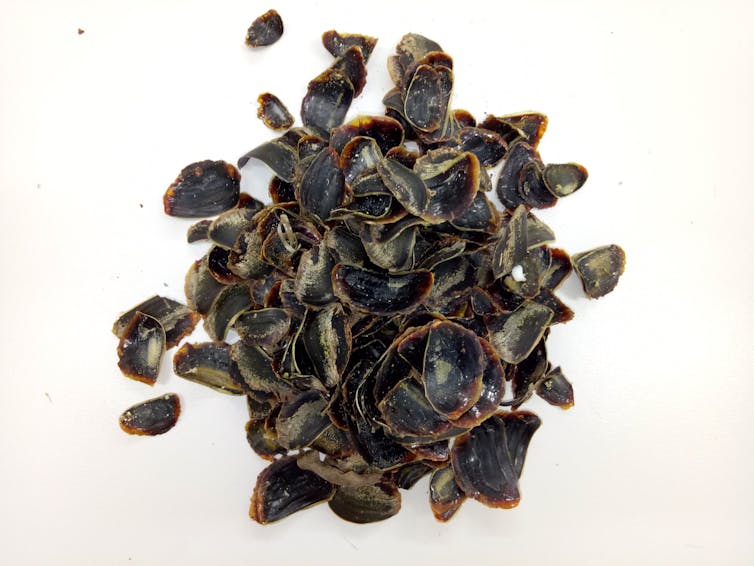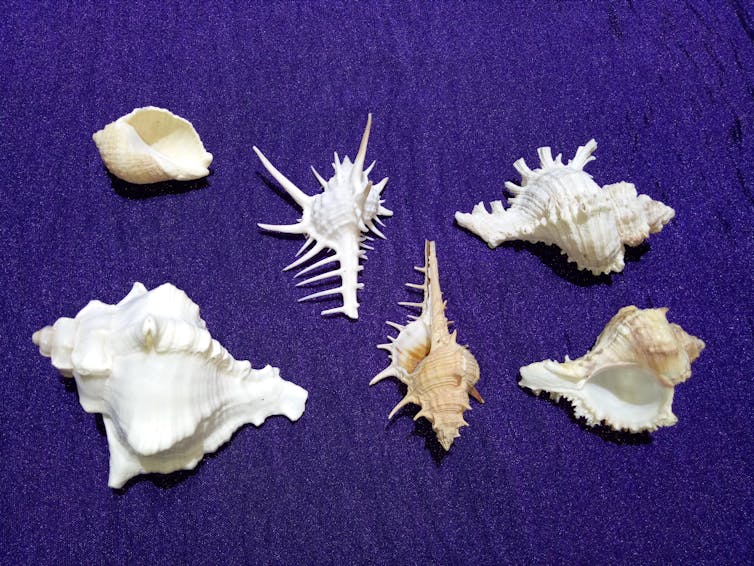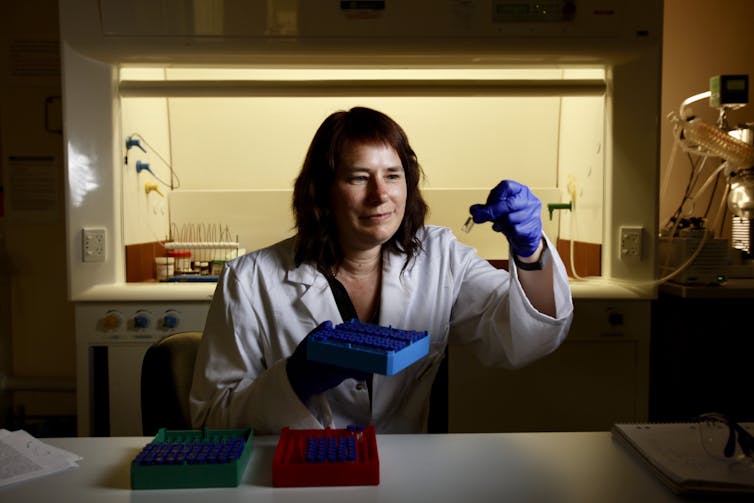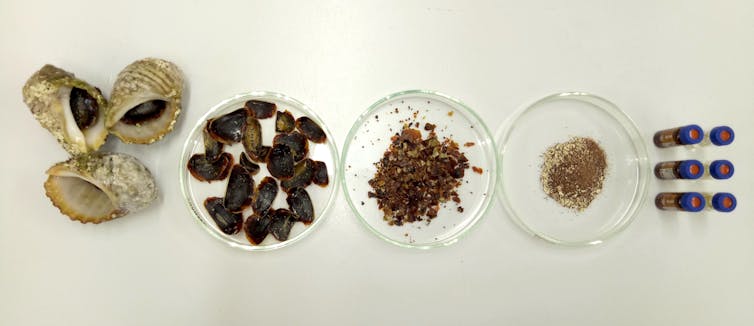
A predatory sea snail could be the source of a mystery ingredient in a holy incense recipe detailed in the Old Testament. Murex whelks were just one of many suspected sources, but there was no evidence to support the claim. Until now.
In a paper published today, my colleagues and I report how we captured and analysed the fragrant chemicals in the smoke of whelk opercula – the trapdoor lid that protects the snail inside the shell. This provides evidence to help establish it as the most likely source of onycha, one of four major ingredients that make up holy incense.

The ingredients are detailed in Exodus 30:34, where Moses is tasked with making incense:
Take fragrant spices – gum resin, onycha and galbanum – and pure frankincense, all in equal amounts.
The origin of three of the ingredients are well known essential oils or resins of botanical origin. But the onycha of antiquity had not been identified with certainty and there was much controversy over its proposed animal versus plant origin.
What is that smell?
Defined as fingernail or claw, onycha is a Greek translation from the original Hebrew word shecheleth, which derives from “a tear, distillation or exudation”.
Whelk opercula are a protein exudation, similar to fingernails, and have to be torn from the flesh before further processing. Ancient texts refer to “Unguis odoratus” (sweet hoof) as the shell or scale of snails from the Red Sea that emit a pleasant smell when burned.
But shells – and opercula – do not smell nice when burned!
So after detaching the opercula from the flesh of the snail, it has to be processed. Ancient and modern practices include rubbing with alkaline solution or soaking in vinegar followed by strong wine, before burning the dried ground powder.
In our experiments, we replicated these procedures using clean acetic acid and alcohol. This helped remove the “fishy” smell from the opercula before drying and grinding into a powder for chemical analysis. We found that this pre-cleaning treatment was also important for removing pyridine – a toxic compound – from the opercula smoke.
The ‘unclean’
The main argument against the identification of sea snail opercula as the onycha of antiquity is that creatures such these were described as “unclean” animals in the Bible. Even their carcasses were considered “unclean” or “an abomination”, depending of your translation of Leviticus 11:9-12.

But one particular group of sea snails, the Muricidae or murex, were highly regarded as a source of Tyrian purple (shellfish purple) and tekhelet (biblical blue). In biblical times, these shellfish were the only known source of an insoluble purple dye.
The incorporation of purple and blue dyed yarn is prescribed for use in the tabernacle and garments worn by high priests (Exodus 26 and 28).
This indicates that the spiritual leaders of the time were not opposed to using products from these sea snails for holy purposes.
The lost knowledge
It is likely the specific ingredients and process for making sacred incense was a closely guarded secret. The scriptures dictate that its use was purely for holy purposes. It was not to be made for personal use, at the risk of being cutoff from the entire community.
Until recently, the secret of dying with biblical blue from the snails was lost, as a consequence of destruction of second holy temple in Jerusalem in 70CE and the subsequent dispersal of Jews from their homeland.
Furthermore, with the fall of Constantinople in 1453 AD, the purple shellfish dying industry collapsed and the tradition was lost in the Mediterranean region for many centuries.
A modern analysis
So how did we go about trying to provide chemical evidence to support the use of opercula from dye producing sea snails in holy incense?

We used a purpose built apparatus to burn the opercula in glass tubes. We then trapped the smoke in solvent using a vacuum, before drying down the extract for chemical analysis using gas chromatography-mass spectrometry.
Our analyses revealed that when burnt, the opercula releases aromatic phenols – compounds that are often used in the fragrance industry as antioxidants. We also detected chlorinated phenols that have a medicinal scent at very low concentrations.
These smoke compounds are consistent with reported use of the opercula contributing to the long-lasting smell of incense. The medicinal fragrance of opercula smoke is also highly compatible with the use of sacred incense for purifying the holy temple and ritualised cleansing during spiritual ceremonies.

It is impossible to conclusively identify the biblical onycha, without original samples for retrospective comparative analysis. But a multi-disciplinary perspective that takes into consideration the historical use of these snails – along with our new chemical information on the scent qualities of the smoke – provides strong support for the opercula from dye-producing whelks.
Species decline
Archaeological evidence indicates that the ancient demand for dye-producing sea snails led to over-exploitation and an associated decline in the populations of some species.

Similarly, modern demand for the shellfish dyes in regional artisan industries and the worldwide fishery for food and ornate shells, is placing pressure on natural populations.
While the opercula can be obtained as a byproduct from other fishing activities, many regional shell fisheries are not effectively monitored. This problem is exacerbated by uncertainty surrounding the impacts of ocean climate change and worldwide mass mortalities in shellfish resulting from disease events.
It is therefore essential that all sea snail fisheries are carefully managed and new opportunities for aquaculture are explored to ensure a sustainable supply to meet future demands.
Kirsten Benkendorff, Associate Professor in Marine Biology, Southern Cross University
This article is republished from The Conversation under a Creative Commons license. Read the original article.











